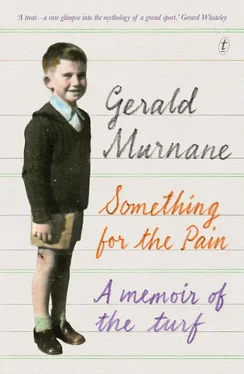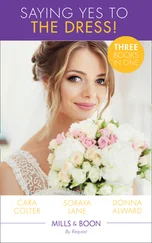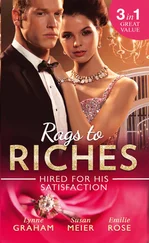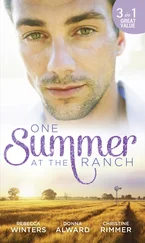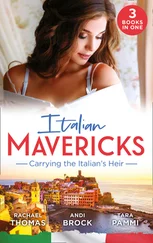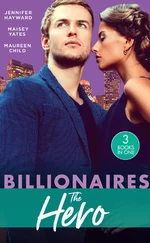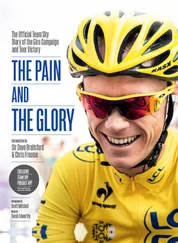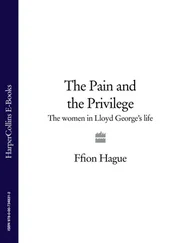The accountant and I did not stay together at the races, although we watched a few races from the same vantage point. I told him nothing about Lickity. My responsibility was to get my bet on quietly at the back of the ring and, if all went well, to collect my winnings quietly afterwards. There was no saying what the man from Wollongong might have done if I had told him to have a modest bet on Lickity. I thought of accountants as wealthy men. For all I knew, he might have had a roll of notes on him and might have launched a plunge of his own.
Lickity was again at generous odds, perhaps because his opposition was stronger. His opening odds were three-to-one, but these soon lengthened. I added five pounds of my own to my father’s twenty. I found a man betting four-to-one in the back row and backed Lickity to win a hundred pounds. I kept away from the accountant and watched the race alone. Lickity led all the way and won almost as easily as he had won at Warrnambool.
I had obeyed my father’s instructions and had kept away from the rails bookmakers, but my betting with a man at the rear of the ring had the disadvantage that I had to collect my winnings in view of the crowd passing to and fro on the main lawn. I had collected my bundle of notes and was folding them into my pocket when I saw the accountant watching me from a distance. Another sort of man might not have felt obliged to say anything, but I have always tried to cover my embarrassment by talking. I walked over to the man and began to tell him about my eccentric aunt. I had met her before the last race…She didn’t like betting with bookmakers and had asked me to bet for her…The more I talked, the more foolish I sounded, but the man from Wollongong was too polite to challenge my story. He was, it seemed, rather impressed, for he gave me the second of the two looks mentioned earlier.
12. Orange, Purple Sleeves, Black Cap
MANY YEARS HAVE passed since I gave up watching films. Even as a young man, I was beginning to tire of their complicated plots, their too-clever dialogue, and the soulful stares of the leading actors. On a certain rainy afternoon in the late 1950s, however, I travelled alone on a suburban train into central Melbourne to watch an English film called The Rainbow Jacket . The plot was improbable, to say the least, and the acting was unconvincing, but I considered my long trip worthwhile. A few days before, I had read, in a lukewarm review, that the film, which was in Technicolor, included footage of actual races on English racecourses. As it turned out, the actual scenes lasted only a few minutes but I got from them what I had hoped to get: I had seen for the first time the details of a few sets of the racing colours of England. The appearance on the screen of each set of colours was so brief that I could recall afterwards not one complete design. I remembered only glimpses of details: a cap with hoops of bottle-green and lilac, perhaps, or the striking X-shape on a primrose or canary ground of chocolate-brown crossed sashes, as I would have called them, although the English call them, so I learned much later, cross belts. I recalled only a jumble of such details but they confirmed what I had suspected since I had begun to study racing colours ten years before: that Australian colours were generally dull and predictable, whereas English colours, even allowing for their being unfamiliar to me, had an extraordinary variety and were, in general, more distinctive or assertive than those worn in Australia. That word assertive may seem odd in its context, but I’ll explain later my use of it.
Perhaps twenty-five years after I had watched The Rainbow Jacket , I was loitering in High Street, Armadale, one of the fashionable shopping precincts in Melbourne’s inner south-east, while my wife was looking through clothing stores. We had not been to Armadale for several years, and I was wondering whether I might find a bookshop among the upmarket shopfronts. In the arcade near the railway station I found not just a bookshop but one dedicated to books and prints with horses as their subject matter. I went inside, walked past the many shelves of books about show horses, equestrian events, that sort of thing, and found the horse-racing section. The proprietor, or whoever he was, asked if I was looking for anything in particular. This sort of question usually irritates me, but something about the man prompted me to confide in him. It’s a lonely life sometimes, being obsessed with horse racing and having no one to share your obsession with, and I was hoping, perhaps, that the man had read some of the books he dealt in and had been affected by them. I told him I had a fair-sized horse-racing library at home but that it had always lacked a certain sort of book — a book that probably didn’t exist, even though I often dreamed about it. Yes, I told the man, I had this dream that I would one day walk into an unfamiliar bookshop and would find on an obscure shelf a massive volume containing illustrations of thousands of sets of racing colours, preferably but not necessarily from England. The man, so it turned out, had a liking for the dramatic. While I was talking, he did a sort of sideways shuffle towards me. Still looking attentively into my face, he reached a hand up to a shelf behind my head. When I had finished speaking, he held out for my inspection a heavy volume of about A4 size with a plain-looking dark-green cover. He asked me off-handedly whether this was the sort of book I had in mind.
The book is beside me now, as I write. I paid fifty dollars for it in the early 1980s. If the price had been a thousand dollars, I would have put it on layby and would have bought no other books until I had saved up for it. The title is The Benson and Hedges Book of Racing Colours , and the publisher is the Jockeys’ Association of Great Britain. The book was published in 1973. The story behind its publication is told in the preliminary pages. It seems the Jockeys’ Association came up with the idea as a fundraiser for their Injured Jockeys’ Fund. The makers of Benson and Hedges cigarettes paid for production costs. The owners of more than nine thousand registered sets of racing colours gave permission for their colours to be reproduced in the book. How many copies were sold or how much money went towards helping injured jockeys I’ll never know. Nor will the persons who brought the book into being ever know how much satisfaction I’ve derived from it.
The book fell open just now at pages ninety-four and ninety-five. Fifty-six sets of colours are arranged before me. Among them are those of Mr P. C. Evans: Mauve and pink chevrons, mauve cap. I learn from the opposite page that Lord Fairhaven’s colours are Copper, silver hoop, armlets and cap. I’ll try another page…I learn from page 236 that Capt. C. R. Radclyffe’s colours are Dark blue, grey sash, collar, cuffs and cap, while Mr Mohammad Rafique’s colours are Black, old-gold sash, sleeves and hooped cap. So what? the reader may be asking. Why should it matter that someone in England forty years ago chose this or that design for his or her colours?
There are people, so I’ve read, for whom numerals or letters of the alphabet have each a different colour. In Remembrance of Things Past , by Marcel Proust, the narrator associates the vowel sounds in certain place names with distinctive colours or shades. I am someone for whom each shade or colour has a rudimentary quality of the sort attributed to persons, while combinations of colours bring me hints of personalities. Surely many people are as fascinated by colour as I am — if not by racing colours. I suspect my interest in colour is linked to my having no sense of smell. I have trouble sometimes convincing people of this, but I have never smelled any sort of odour. I have held under my nose flowers said to be rich in fragrance and detected nothing. I once sat calmly reading in a room that was filling with gas after my saucepan had boiled over and had put out the flame on my stove. When I hear or read about odours, I see in my mind colours. The odour of a red rose is red; the smell of gas is a bright blue. I used the word assertive in an earlier paragraph. For me, each colour or combination of colours asserts something. To put it simply: for as long as I can remember, I’ve believed that colours are trying to tell me something.
Читать дальше
